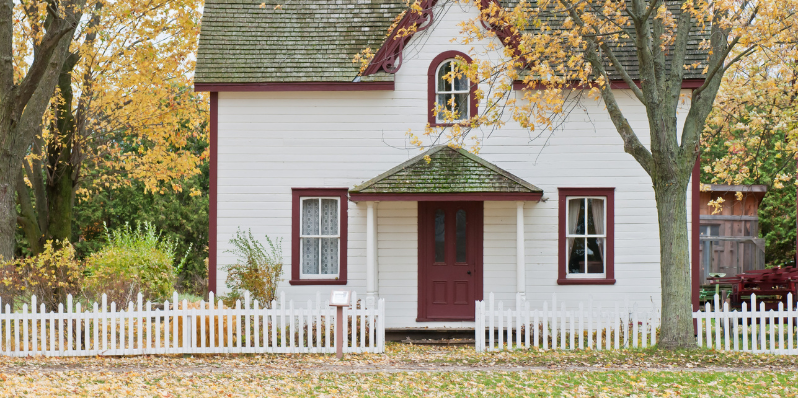Housing prices are at record highs across Canada. These prices are hard on those looking for a new home, especially first-time home buyers. Buying your first home is stressful enough, but high prices, and rising interest rates, have first-time home buyers looking for help to make their mortgage payments more affordable. One option is the First-Time Home Buyer Incentive.
The First-Time Home Buyer Incentive (FTHBI) is a shared-equity mortgage aimed at making home ownership more affordable for first-time home buyers. The program is designed to lower their monthly mortgage payments without increasing the amount they need to save for a down payment. Sounds great, right? But there is more to the story, including who qualifies, how to apply, and the long-term viability of the incentive. We’ll dig into it all here.
Canada’s First-Time Home Buyer Incentive
1. How does the First-Time Home Buyer Incentive work?
2. Why is the First-Time Home Buyer Incentive important for Canadians
3. Who qualifies for the First-Time Home Buyer Incentive?
4. How to apply for the First-Time Home Buyer Incentive?
5. Is the First-Time Home Buyer Incentive worth it?
How does the First-Time Home Buyer Incentive work?
The First-Time Home Buyer Incentive helps qualified home buyers ease the load of their monthly mortgage payments. It is a shared-equity mortgage loan with the Government of Canada. Yes, you co-own the home with the government.
The percentage of support changes depending on the type of home you are buying:
The incentive is a loan based on the property’s fair market value. It is interest-free, and you can repay it anytime without incurring penalties. You should be aware of the following conditions:
1. The loan must be repaid within 25 years of the date borrowed or when you sell the home, whichever comes first.
2. While the loan is interest-free, it’s a “shared equity mortgage,” which means the government shares in any gains or losses on the property value up to a maximum profit or loss per year of 8% (not compounded).
Why is the First-Time Home Buyer Incentive important for Canadians?
First-time home buyers have a hard time getting the downpayment for their future home. A recent survey conducted by Leger on behalf of RE/MAX reveals that many Canadians struggle with housing affordability. This affordability is the primary reason the federal government launched this incentive in 2019.
Here’s an example of how the incentive benefits first-time home buyers in Canada. Let’s say Muhammad wants to buy an existing home in Regina for $400,000. He has saved $20,000 to put toward the down payment (5% of the purchase price).
Because it is an existing (or resale) home, Muhammad can receive $20,000 (5% of the cost of the home) through the First-Time Home Buyers program. That money will increase Muhammad’s down payment, resulting in lower monthly payments.
Who qualifies for the First Time Home Buyer Incentive?
The aim of the First-Time Home Buyer Incentive is to help middle-class home buyers who need a boost. Here’s how you qualify for the program:
Last year, the government modified the eligibility criteria for homebuyers in Toronto, Vancouver, and Victoria. First-time homebuyers in those metropolitan areas are now eligible for an increased Qualifying Annual Income of $150,000 instead of $120,000, and an increased total borrowing amount of 4.5 instead of 4.0 times their qualifying income. This change would increase their buying power to roughly $722,000, up from $505,000.
In terms of the home itself, it must be in Canada and suitable for full-time, year-round occupancy. It must be your primary residence and can’t function as an investment property.
How to apply for the First Time Home Buyer Incentive
The first steps are similar to the path of any home buyer. First comes pre-approval for a mortgage through your bank or mortgage broker. Then you find your ideal home, ideally with the help of a skilled real estate agent.
If you’re eligible, it’s time to apply for the incentive. Like any government program, there is extensive paperwork to complete. You provide those documents to your lender, and they submit the application for you. From there, you wait for acceptance and follow the instructions provided.
Is the First Time Home Buyer Incentive worth it?
Critics have questioned the value of the First-Time Home Buyer Incentive, arguing that it does little to help homebuyers in Canada’s priciest housing markets – the people who need the incentive the most.
We can see Toronto as an example where the incentive may fail first-time home buyers. According to the RE/MAX Toronto Housing Market Outlook Report the average sale prices of homes in Toronto are well above the threshold of the program. The average sale price of a home was $1,054,992 in 2021. It’s estimated to hit $1,160,491 this year. The max for the incentive is $722,000, limiting the inventory that a first-time buyer can choose.
Critics point to the restrictive eligibility criteria, unnecessary extra fees, and disinterest from prospective homeowners having to co-own a home with the government as all drawbacks of the program.
Additionally, the market has seen record sale prices since the onset of the pandemic. As those prices soar, it increases the amount that you have to pay the government to settle the loan. You may end up paying more than you borrowed, a risk of the incentive.
What does the future hold for the program? The Liberal government introduced this incentive in 2019, hoping 100,000 Canadians would take advantage of the shared-equity mortgage. But recent reports have revealed that only 16,000 Canadians have benefited.
The program has paid roughly one-fifth of the expected amount ($269 million) since 2019. The three-year deadline arrives in September 2022, so we will see if the program changes, remains the same, or is scrapped.
Source: RE/MAX Canada


